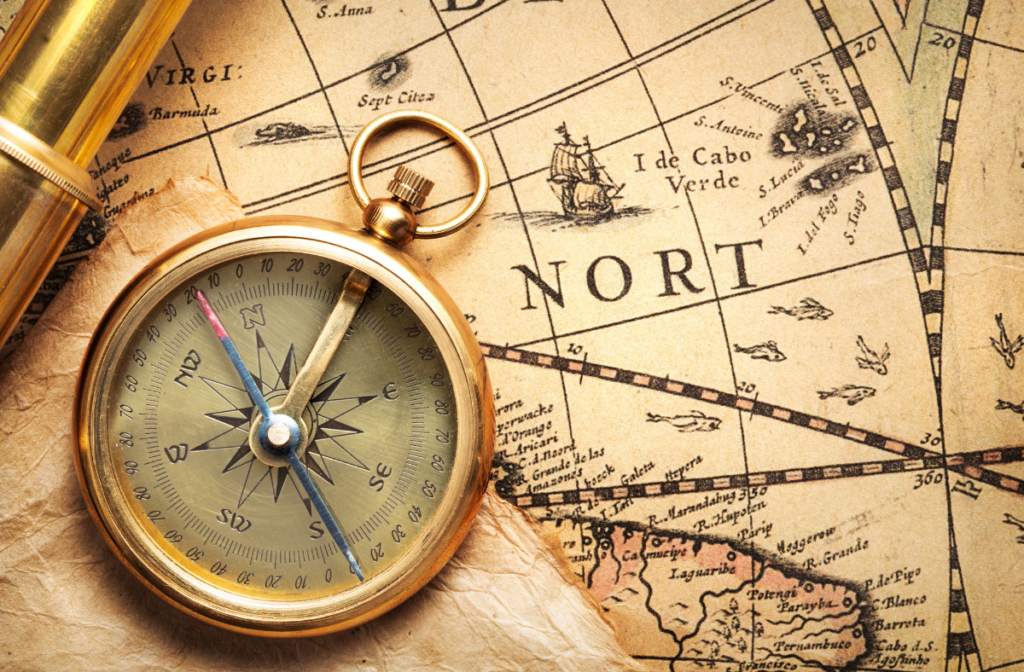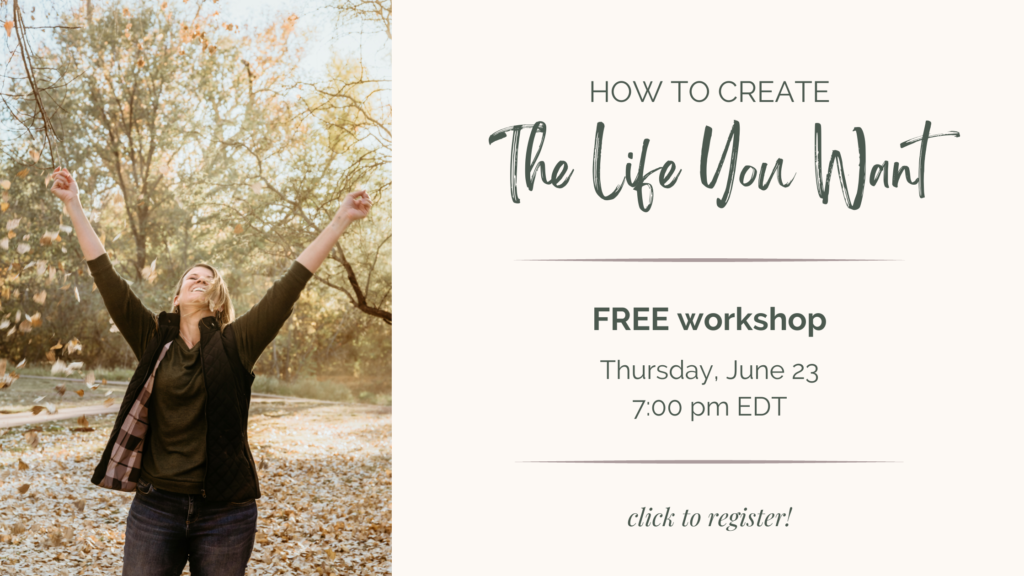One of the biggest obstacles to creating the life you want after a setback is not believing in what’s possible for yourself. In this article, I’ll talk about how to get your bearings so you can take your life back.

I’ve been finding myself talking with people a lot lately about five phases or stages that I feel like everyone goes through when they’re experiencing some kind of life transition like a divorce, breakup, new job, career change, and kids going off to college, to name a few.
When life changes so drastically, it’s common to feel lost and alone. It’s kind of like getting lost in the wilderness and trying to find your way, but all of the scenery has changed and you think you might have lost the only navigational tools you have – your compass and map.
Well, you always have those tools. They’re always located with you in your heart and soul. And today I want to share with you more about the first phase in my 5-step process of rebuilding your life after a setback which is getting your bearings. It’s all about assessing where you are and getting an idea of where you want to go so you can point yourself in the right direction.
To recap the other steps, step 2 is surrendering to your situation and accepting that the path you’re on might not have been the right one. Step 3 is finding your compass, or coming home to your heart. It’s a time of deep self-discovery. Step 4 is learning to love yourself and where you are in life, even if it’s not perfect. It’s navigating and enjoying the scenery along your path. And step 5 is making your final summit bid. It’s where you summon all of your strength and courage and go for it.
During step one, you might feel disoriented and overwhelmed with emotions. Many of my clients have described feeling lost-like they don’t know who they are anymore, or even what they really want. It’s a frustrating place to be since it can feel overwhelming. Where do you even start to take your life back?
Like any journey through the wilderness, you have to be able to navigate. but to do that, you need to know where your starting point is. You have to know where you are on your trail map. You also need to know where you want to go so you can plan your route,
Humans love routine. We love for things to feel familiar, generally. Our brains like things to be efficient, and when things change, it has to do some extra work that it doesn’t really like all that much. We feel most comfortable doing familiar things.
Take, for example, being with people. You feel much more at home with people you already know. You have an easier time being you. When you are in a new group of people, and you don’t know anyone, most people act differently than they do with familiar people and familiar places. It might feel slightly disorienting – you may feel like you need to survey the atmosphere to know what you can and can’t say or do. It might take you a little bit of time to find who you like and don’t like, and how you show up in this new environment.
When you go through a big transition in life, like a divorce, end of a relationship, new job, loss of a job, career change, kids leaving home, etc, it can feel similar. Like you are finding your way again. It’s unfamiliar.
It can feel really overwhelming to start to take your life back. In divorce, for example, you’re dealing with a lot of loss. You’re losing your relationship as you knew it with your partner, the structure of your family as you knew it is changing, routines, possibly a home, lifestyle, friends, and you’re also dealing with the loss of your identity. You might wonder who you even are anymore.
Emotions are high and can be overwhelming too. It can feel like you’re lost because everything you’ve known to be true is changing. It’s kind of like quicksand!
You’ve been put in a position where you’re having to rebuild a lot of your life.

To get your life back on track, you have to start with taking stock of where you are now. It’s like you have a trail map, but in order to know where to go, or what your next steps are, you have to know where you are on the map.
That means you’ve got to roll up your sleeves and look at all of the things that aren’t working for you now.
After a big change in life, most people feel overwhelmed and crappy, but they can’t tease out what exactly is making them feel this way. It’s the overall situation, which is true, but there are specific things that are causing them to feel crappy, and those things all start with thoughts.
So, we need to figure out what things in your life are the specific things that are causing the thoughts that cause the crappy feelings.
It helps to break it down into categories, and this is s0mething I do with all of my clients.
You break your life down into different categories, or areas, and look at what you’re not happy with– categories like job/career, finances, personal growth, spirituality, home, fun/recreation, relationships, time management, and health and wellness. You can also look at more conceptual things like how much joy you have in your life, resilience, courage, confidence, connection, or authenticity.
This is such a good exercise to do because when you start to break it down, you’ll see that it isn’t really everything that sucks. You’ll be able to see that there’s a little more gray area than that.
For example, sticking with the divorce example, a lot of my divorced clients–most actually, are not in a place where they feel good about money. They are maybe having to take on financial responsibilities that they haven’t ever had to do before, they might be dealing with legal fees, worried about having enough money, or maybe they’re having to create and follow budgets for the first time. By zeroing in on this category, you can see what it is specifically about money that doesn’t feel good. This is a great way to identify some of the things that you’re going to need to work on to get to the bigger and better life that you deserve.
Or, let’s say you look at the area of courage and realize that you’re afraid to try new things. That would tell you that you’re going to have to work a little harder to step out of your comfort zone as you rebuild your life.
But really assessing where you’re at – getting honest about the things that are still good in your life, and the things that aren’t so good will help you see that it isn’t just black-and-white.

Most people have a really easy time coming up with what’s not working for them but have a harder time knowing what they want most in life.
But you also need to have a general direction of where you’re headed. Now, at this point, you don’t need to have it all figured out. You just need to have a general idea.
You might realize that in the area of health and wellness, you’ve really let all of the stress and overwhelm get to you and you haven’t been taking care of yourself like you want to. So that’s an area you want to put some effort into. Maybe you even know that you want to lose a certain amount of weight, or get back into shape so you can resume some of the activities you’ve let slide.
Or, maybe you realize that you don’t have much joy in your life, and finding joy is a priority for you. Then you know that’s an area you need to home in on and strengthen.
This part can be harder for people for a few reasons. First, our brains are wired to focus on what’s wrong. And also because when it comes to desiring something, on some level most of us have been taught that it’s wrong to want more. Or, we feel we’re not worthy of desiring big things. So, people tend to shrink back a little.
But you get to decide your “summit”. If it’s Mt. Everest, it’s yours. If it’s Sugarloaf Mountain (the little spot I hike in MD), it’s yours. No summit is too big or small for you to want to reach.
Knowing what that gap is between where you are and what you desire is the first step in reaching your summit. You don’t need to know how you’re going to get there yet. This is just the step where you get your general direction. In later phases, you’re going to learn how to navigate and enjoy the scenery along the way, but right now it’s simply finding yourself on the map.
Along your journey to your summit, there will be plenty of obstacles, and it’s important to be aware of them because these are things that can, and do, stop people from even starting their new adventure.
In particular, one of the biggest obstacles to finding where you are on the map and starting to dream up where you want to go is that so many people can’t fathom it actually happening. They don’t believe what they want will ever be possible.
The “gold”, or important information, is buried in this lack of belief. It’s a bit like an excavation. You look at what it is that is keeping you from believing you can create the life you want.
Here’s the thing: you get to decide what you want to create, and you get to decide if it’s possible or not. Where a desire is present, the way to fulfill it is also present.
So, if you get to decide if what you want comes to fruition, why don’t you just make it happen?
The short answer is fear.
Leaving your comfort zone, no matter how crappy it might be, is scary because it’s unknown. It’s funny because when someone is afraid of something not being possible, when I ask them, what if it IS possible, they often feel feelings of stress or anxiety. All the things like, what if I fail, what if it’s not better, what if I lose it again, what if I’m abandoned, what if other people don’t like me… all of these sorts of things come up.
It’s like a fear of success. What will happen to me if I DO succeed.
It sounds silly, but this is SO common.
So what do you do to start to take your life back?
You work on your belief.
You excavate and find all of the stories that you have that are keeping you playing small and out of belief.
Stories like:
I’m not enough-I’m not smart enough, strong enough, good enough
I’m not good with money.
Things always go wrong for me
What if I fail? I always do
It’s too hard
I don’t know how
I can’t
And you dig into those stories and you shift them. You let go of them and allow yourself to believe something different.
When you can shift your energy into a place of believing you can, you’re halfway there!
So that’s the process of re-orienting and getting your bearings when your life is changing. Take some deep breaths and look at what’s good and what’s not ideal. Dream up your vision and look at where you’re getting stuck. Then, you can identify your next right step.
You’ll have the life you want before you know it.
Prefer to listen? Click HERE to listen to the accompanying podcast episode on Real, Brave, & Unstoppable!
FREE Workshop!
Learn more HERE



